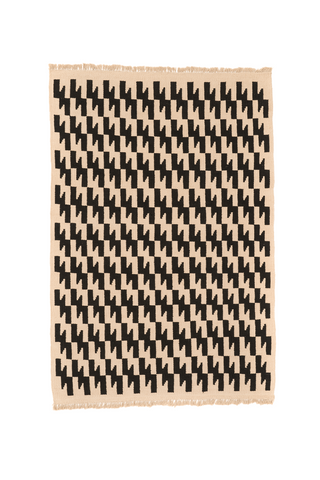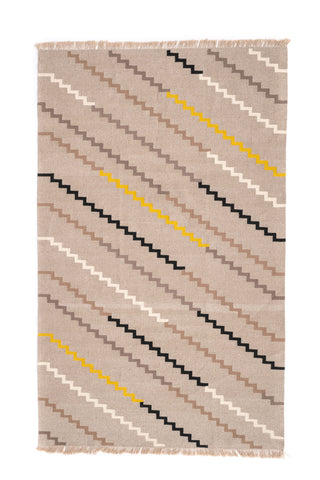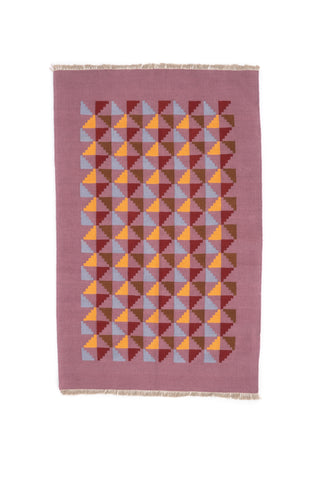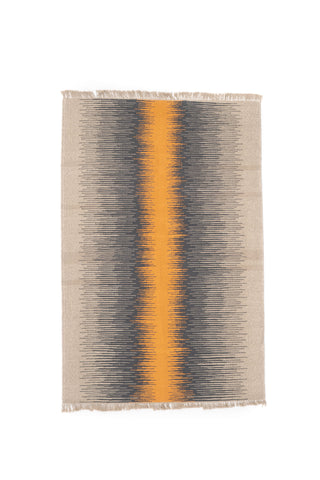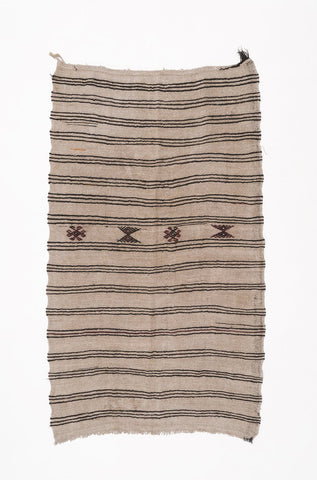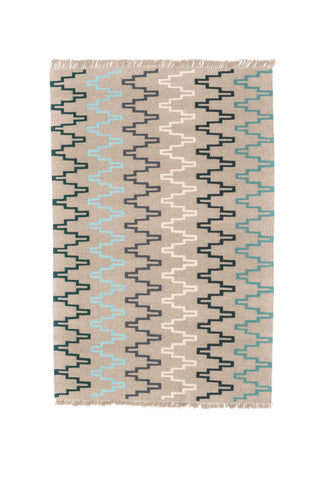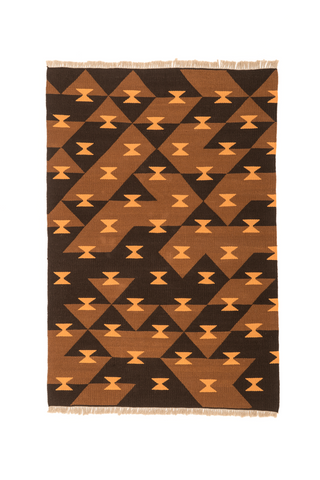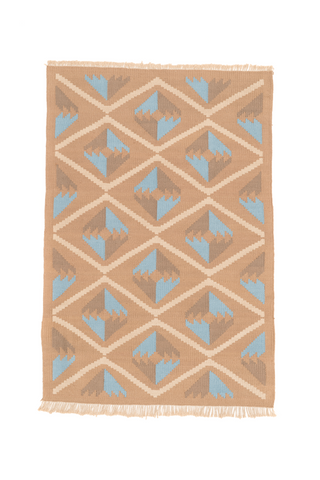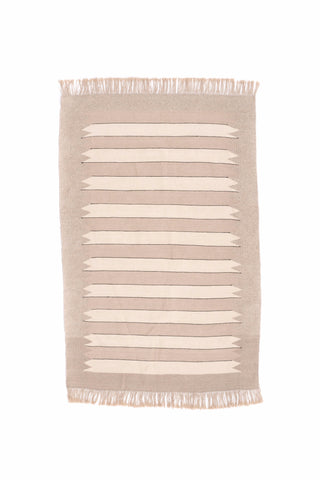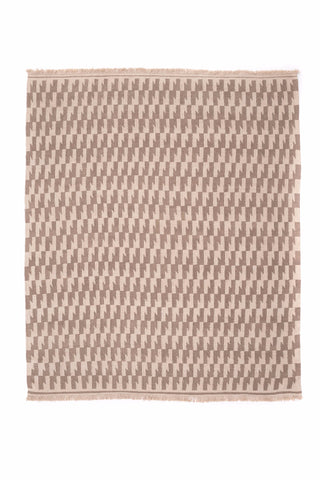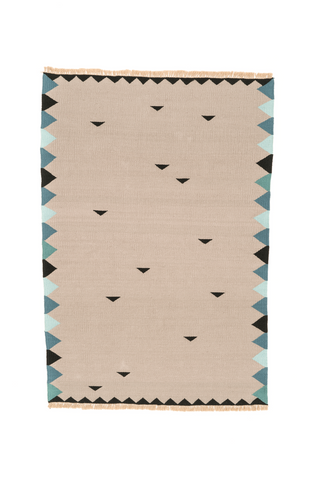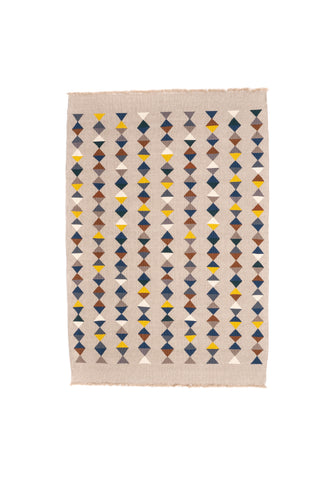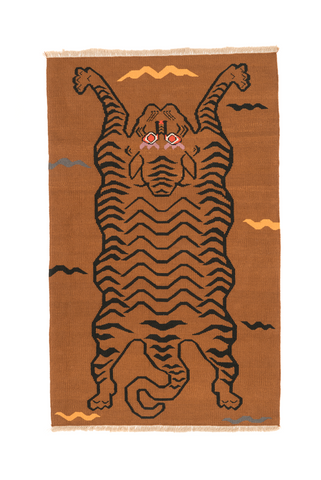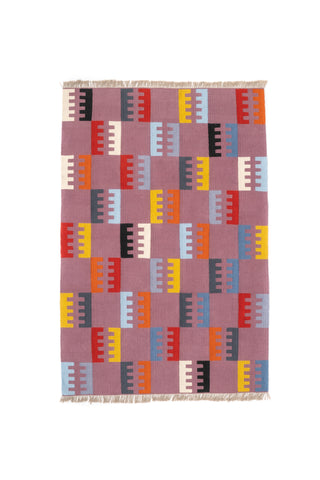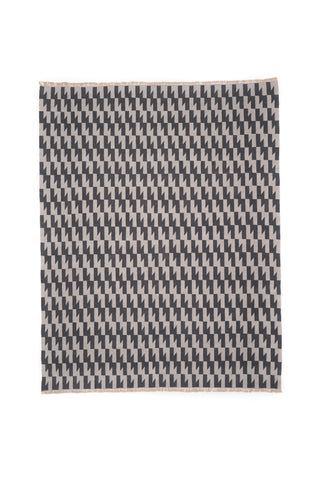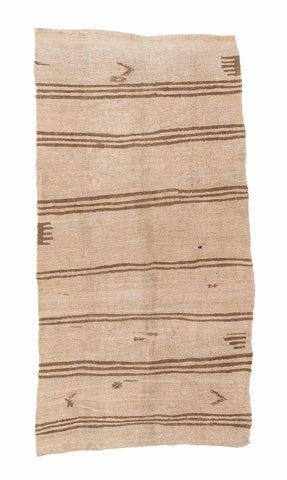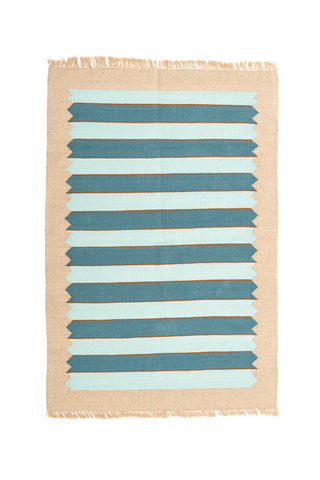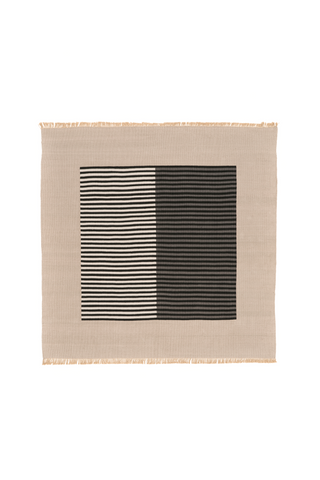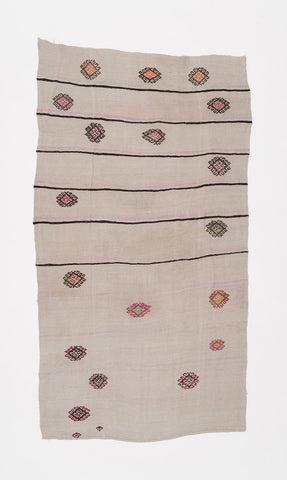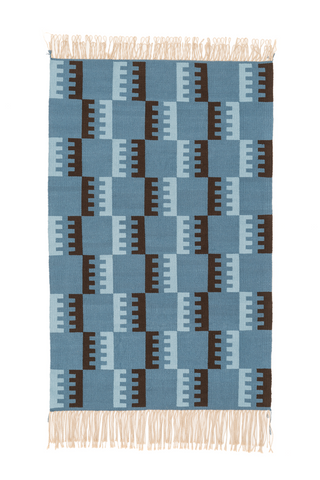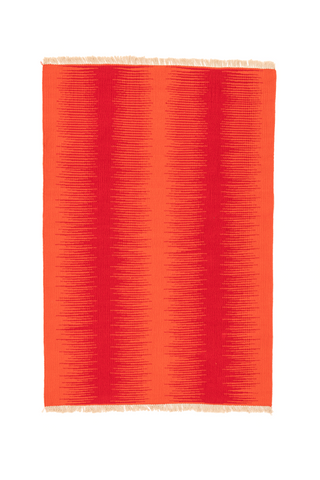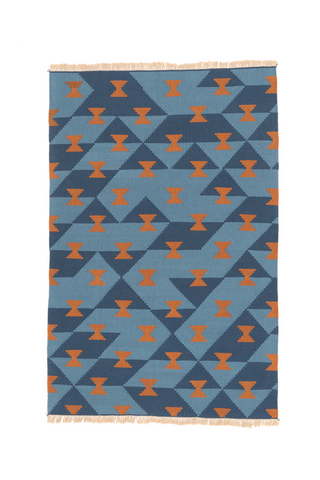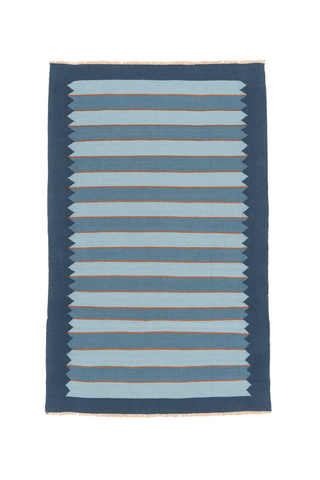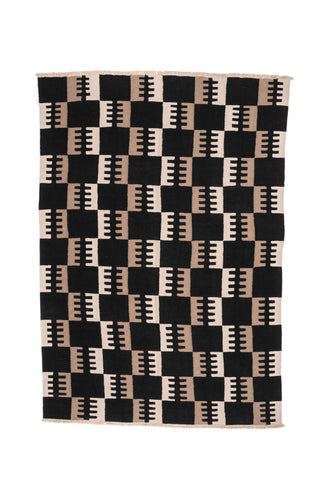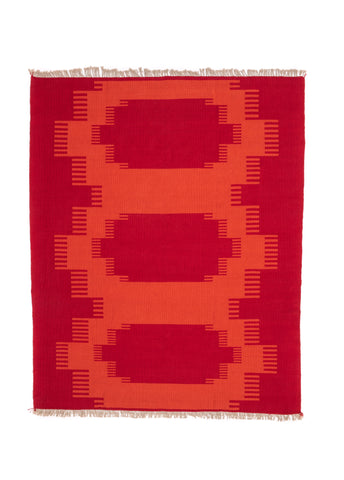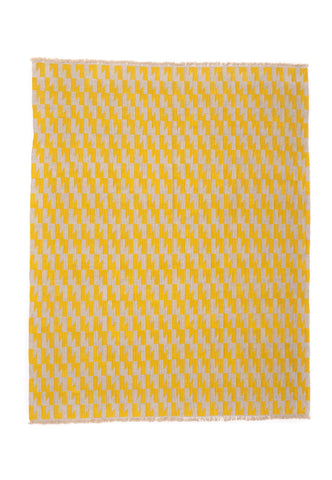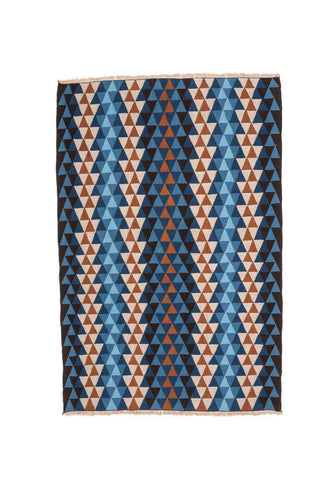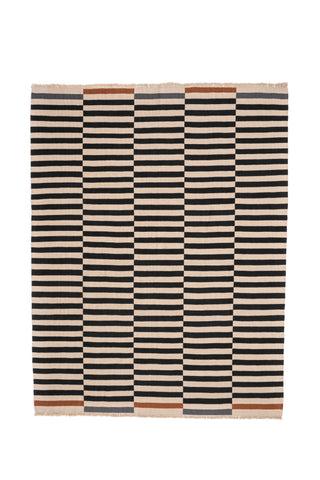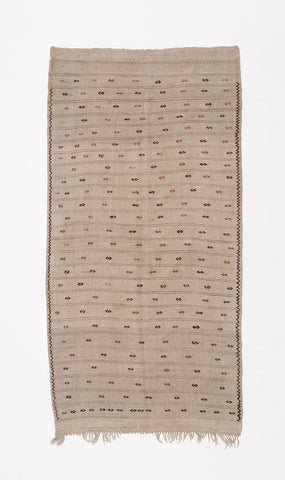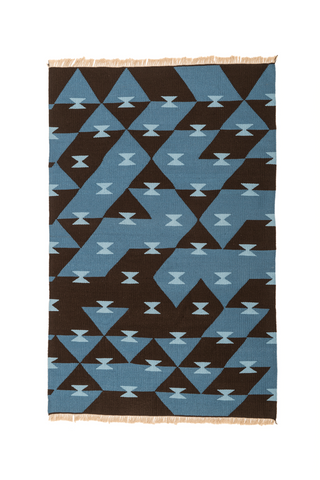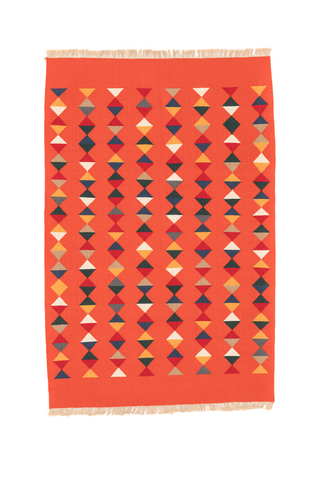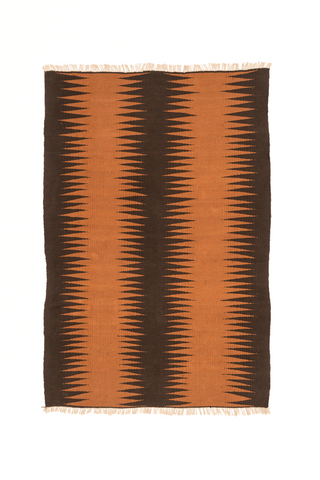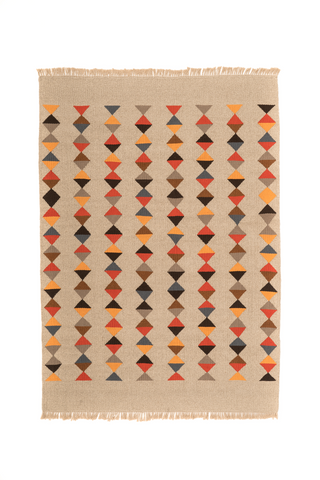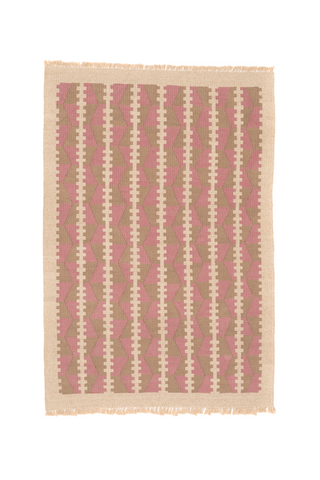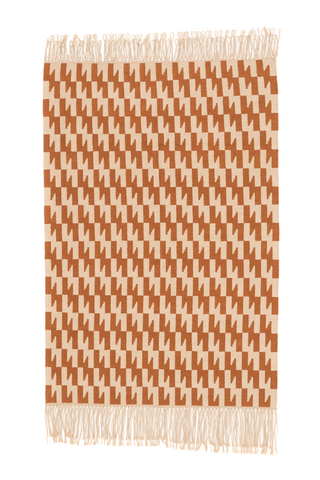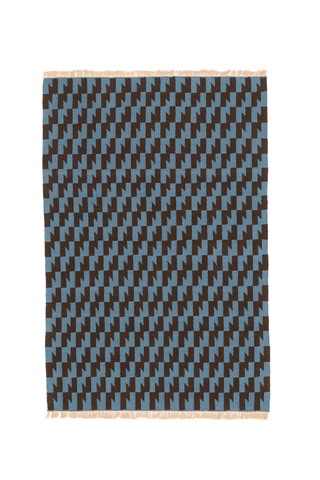Hemp vintage rugs are weighty, robust, strong, and bold; and blend well with natural settings such as wood, stone or tile floors; and they present fine contrasts for displaying brighter or more complex textiles. Design styles range from plain and unembellished fields, through simple warp-striped weaves, some with sparsely decorated asymmetrical designs, through a myriad of symmetrical weft band and floating motif combinations, to complex geometrical patterns. Many are highly embellished with ancient bold motifs rendered in dyed hemp, goat hair, wool and/or synthetic yarns. These combinations are creatively matched in texture and color, and deeply satisfy our aesthetic senses. Thin strips of colorful market cloth were also repurposed into hemp textiles following the “waste not, want not” ethics of subsistence farmers. Locally sourced pigments were used to dye hemp yarn, and the goat hair and wool are often naturally colored, but the brightly colored wool yarns used in motifs were generally synthetically dyed. Hemp rugs offer tactile pleasures best enjoyed by sitting, lying down, stroking or walking on them with bare feet. A great advantage of our rugs is their excellent condition. Pre-loved, but not worn out, they should serve for many more decades. These are all special weavings, unique and unforgettable.
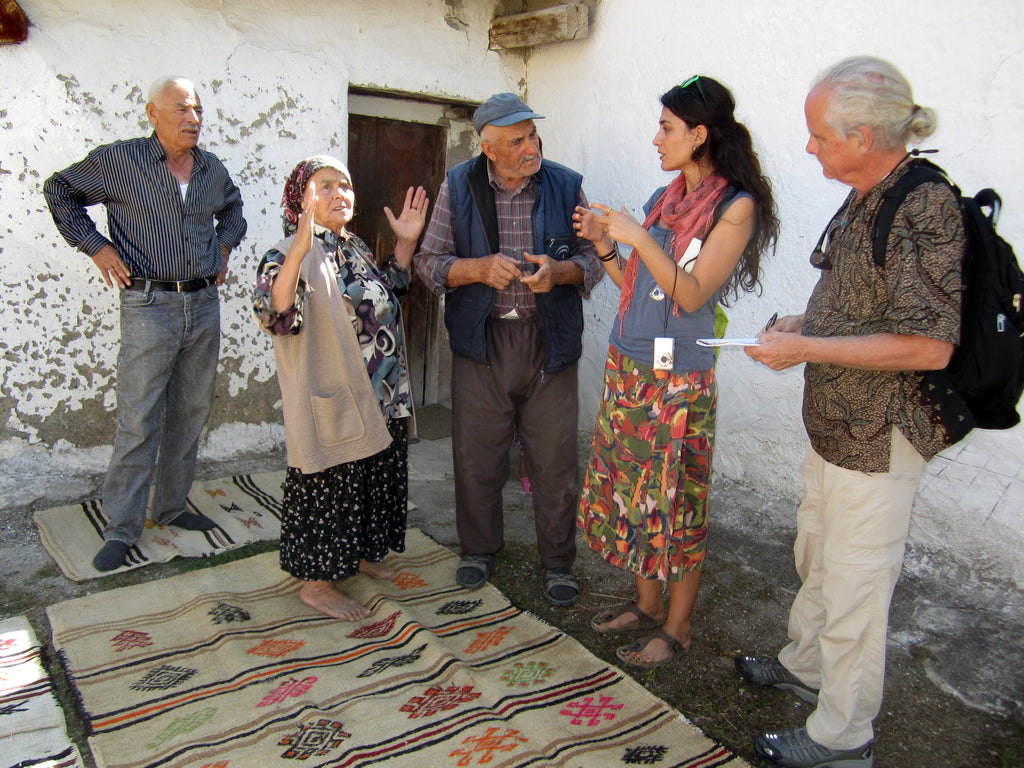
Vintage hemp rugs are Women’s creations. Men made hemp ropes; women wove hemp cloth. The choice of design and motifs are entirely the weaver’s prerogative and reflect her heart and soul. Young girls often wove hemp rugs along with older relatives. These were early lessons in handicrafts, and sometimes they practiced writing their own name, or that of a young man they admired. There were few market influences because hemp saddlebags, grain sacks, tarpaulins and rugs were only made for domestic use and were not woven as commercial products. No male constraints were imposed based on market perspective, as men did not sell hemp textiles, and they remained fully within the women's creative domain. Wool and goat hair were provided by the men's flocks, while hemp was grown by women in the family garden. The fiber used in vintage hemp textiles was naturally grown. Hemp fields require few artificial inputs and subsistence farmers rarely had enough money to buy chemical fertilizers and pesticides.
Vintage Hemp Rug Motifs
Many hemp textile motifs precede Islamic and Western influences and originated in shamanic times. Weavers learn their first motifs from their mothers and other older weavers. She learns the form and name of each motif and throughout her life chooses which to draw on for a certain weaving. Motifs often reflect perceptions of daily life, representing personal contexts of abundance and protection, blended with a woman’s sense of humor. Motifs selected by different weavers may look much the same to us, yet means something personal to each weaver.










